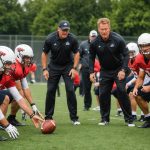In the pursuit of optimal fitness and improved health, many individuals reach for innovative workout regimes and cutting-edge gym equipment. Yet an often overlooked secret to achieving and surpassing your goals lies not just in how you exercise, but in what you consume. Understanding the intricate link between nutrition and exercise can revolutionize your approach to fitness. By diligently tracking your nutrition, you’re not just counting calories—you’re paving a meticulous path to enhanced energy, performance, and results. This article explores how a detailed examination of your diet can transform your workout outcomes.
Understanding the Basics of Nutrition Tracking
Tracking your nutrition begins with understanding the fundamentals of what you’re consuming and how it impacts your body. At its core, nutrition tracking involves recording the types and amounts of foods you consume, alongside relevant metrics like caloric intake, macronutrient distribution, and micronutrient presence. It’s not just about listing what you eat—it’s about analyzing and making informed decisions based on the data.
This might interest you : Top Footwork Drills Every Squash Player Needs for Superior Performance
Why Track Nutrition?
- Personalization: No two bodies are the same. By tracking, you learn what works specifically for you, leading to personalized diet plans.
- Performance Insight: Tracking helps determine which foods fuel your workout effectively. Identifying specific meals that boost energy or hinder performance can make a world of difference.
Tools and Techniques:
In parallel : Fueling victory: how sports nutrition drives athletic excellence in competitive events
- Apps and Journals: Modern technology offers a range of apps designed to simplify the tracking process, providing insights into calories, macros, and more.
- Food Labels: Learning to read and understand food labels is essential. They provide crucial data that can tweak your diet towards better health.
By embracing these basics and consistently monitoring your eating habits, you lay the groundwork for more strategic fitness planning.
How Nutrition Tracking Influences Fitness Goals
Tracking your nutrition allows you to meld your dietary habits with your fitness objectives, creating a harmonious synergy between what you eat and how you train.
Impact on Muscle Building:
- Protein Intake: Adequate protein consumption is pivotal for muscle repair and growth. Tracking protein helps ensure you’re meeting your daily needs without overloading your diet.
- Carbohydrate Cycling: Carbs are the body’s primary source of energy. Properly timed intake can enhance workout efficiency and muscle recovery.
Weight Management:
- Caloric Deficit: For weight loss, consuming fewer calories than your body burns is crucial. Tracking helps maintain this delicate balance.
- Satiety and Cravings: Logging what you eat can identify patterns of unnecessary snacking, helping control cravings and maintain a healthy weight.
Ultimately, understanding your nutrition empowers you to make educated choices that align with your fitness endeavors, leading to more effective and satisfying results.
Challenges in Nutrition Tracking and How to Overcome Them
While the benefits of nutrition tracking are evident, the journey isn’t without its hurdles. Common challenges can deter even the most motivated individuals, but with the right strategies, these obstacles can be surmounted.
Consistency:
- The Initial Commitment: Starting a new habit can be daunting, especially in tracking every meal. To ease into it, begin with small steps—track one meal a day and gradually increase.
- Routine Building: Anchor your tracking habits to established daily routines, like brushing your teeth or having your morning coffee, to enhance consistency.
Accuracy:
- Portion Sizes: Determining correct portion sizes can be tricky. Utilize kitchen scales and measuring cups to ensure accuracy.
- Eating Out: Dining in restaurants poses a challenge for precise tracking. Opt for dishes with clear ingredient lists or request restaurant nutritional information if available.
Confronting these challenges with practical solutions allows you to maintain a steady path toward achieving your fitness outcomes through diligent nutrition tracking.
Elevating Your Fitness Journey with Nutrition Tracking
With a solid understanding of nutrition tracking, it’s time to integrate this practice into your broader fitness regime for optimal results.
Holistic Approach:
- Mindful Eating: Beyond tracking, mindful eating encourages you to attune your body’s signals of hunger and fullness, promoting a balanced diet.
- Hydration: Adequate water intake is often overlooked. Tracking hydration levels can enhance energy and workout performance.
Developing Healthy Habits:
- Set Realistic Goals: Align your nutrition tracking with attainable fitness goals. Whether it’s shedding pounds or building muscle, realistic expectations are key.
- Support Systems: Share your tracking journey with friends or fitness communities. Accountability partners can offer motivation and insights.
By embedding nutrition tracking into a comprehensive fitness strategy, you cultivate a sustainable lifestyle that fuels your body and mind.
Tracking your nutrition is more than a mere exercise in recording what you eat—it’s an empowering tool that can significantly enhance your fitness outcomes. By understanding and optimizing your diet, you unlock the potential to maximize energy, support muscle growth, and achieve your desired fitness goals. While challenges may arise, the combination of consistency, accuracy, and a holistic approach ensures that these hurdles are not only overcome but are transformed into stepping stones on your path to health. As you continue this journey, let the data guide you, ensuring that each bite, each meal, and each workout contributes meaningfully to a healthier, more vibrant you.











